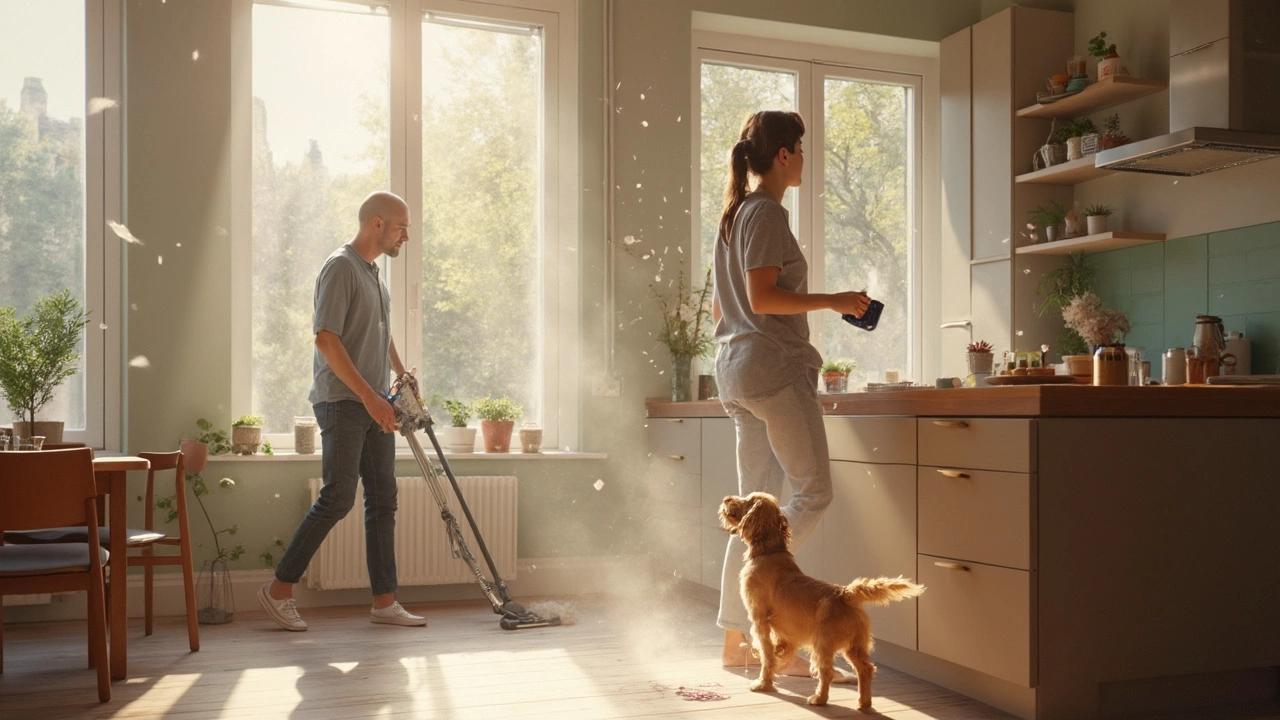Indoor Air Quality: Easy Ways to Breathe Cleaner Air at Home
Ever notice that stale feeling after a day of cleaning? That’s your indoor air showing signs of dust, allergens, and hidden odors. Good air quality isn’t a luxury – it’s essential for a healthy home, better sleep, and clearer thinking. The good news? You can improve it with everyday habits and a few smart cleaning moves.
Why Indoor Air Quality Matters
When you keep windows shut and run the heater, pollutants from dust, pet dander, and cleaning chemicals start to linger. Over time they can trigger sneezes, headaches, or even worsen asthma. A home with fresh air feels brighter, and studies show it can boost mood and productivity. In short, cleaner air equals a happier household.
Quick Fixes to Boost Air Freshness
Start with the basics: open windows for 10‑15 minutes each morning. Even short bursts of fresh air push out stale indoor gases. Next, swap out old carpet if it’s a magnet for dust – a low‑pile rug or hard floor is easier to keep clean.
Vacuum with a HEPA‑rated filter. Regular vacuuming picks up fine particles that standard bags miss. If you don’t have a HEPA vacuum, a damp mop on hardwood or tile will trap dust instead of sending it back into the air.
Control humidity. Too much moisture invites mold, while very dry air can irritate throats. Aim for 40‑60% relative humidity using a simple hygrometer and a dehumidifier or humidifier as needed.
Use natural cleaning solutions. Vinegar, baking soda, and a splash of lemon cut through grime without adding harsh chemicals that linger as fumes. For stubborn grease, a mix of warm water and a few drops of Dawn dish soap does the trick without overwhelming the room with scent.
Don’t forget upholstery. Sofas, cushions, and mattresses collect skin flakes and pet hair. A quick once‑a‑month vacuum using the upholstery brush, followed by a light spray of a water‑vinegar mix, keeps them from becoming hidden air pollutants.
Houseplants can act as natural air filters. Spider plants, snake plants, and peace lilies absorb some VOCs and release oxygen. Just be sure not to overwater – soggy soil can become a mold source.
If you struggle to keep up, a professional cleaning service like Dandy Fox can take the heavy lifting off your shoulders. Their deep‑cleaning crews use HEPA‑rated equipment and eco‑friendly products that lift dust from carpets, vents, and hard‑to‑reach spots, leaving the air noticeably fresher.
Remember, improving indoor air quality is a series of small steps, not a one‑off project. Keep windows open, vacuum often, and choose gentle cleaners. Over time you’ll notice fewer sneezes, clearer breathing, and a home that feels lighter. Breathe easy – your lungs will thank you!"

How to Remove Dust from Air After Construction: Practical Cleaning Hacks
Construction dust lingers long after the builders leave, getting everywhere—from kitchen counters to your dog’s fur. This article gives you practical ways to clear dust from the air after a renovation or building project. You’ll learn which tools actually make a difference and why certain shortcuts don’t work. Plus, I’ll share expert tips to protect your lungs and your sanity. Get ready to breathe easy again—without spending a fortune.
Read More